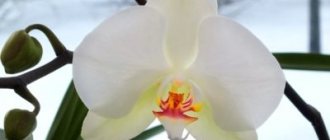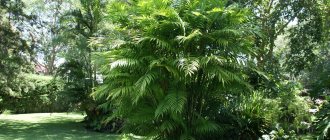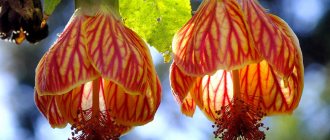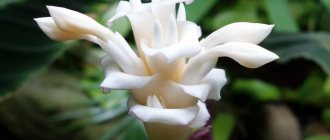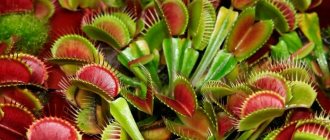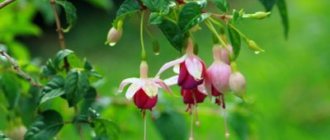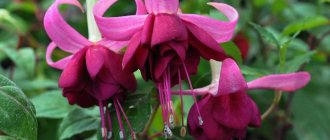A plant such as chrysalidocarpus is directly related to the arecaceae family. This palm tree is quite common and can be found in nature in Madagascar and the Comoros Islands. The genus was so named because of the light yellow color of the fruits. From the ancient Greek language chryseus - “golden”, karpos - “fruit”. It happens that such palm trees are called areca (an outdated name).
Such a palm can be either a multi-trunked bush or single-trunked. It can reach a height of 9 meters. Erect, non-branching stems have a pubescent or smooth surface. There are shoots swollen in rings, they may also have lateral shoots, which together form a group. The pinnate leaflets have 40 to 60 pairs of lanceolate leaves, which are dissected at the apices. The leaves are located at the top of the shoots on thin cuttings. There are species in which basal leaves grow near the stem and merge with the general crown of the plant. This plant can be either bi- or monoecious.
Description of Chrysalidocarpus
Chrysalidocarpus belongs to the Palm family, Arecaceae subfamily. Palm trees from this genus are found in multi-stemmed and single-stemmed varieties. The first ones are twisted among themselves or arranged in parallel. The latter have one smooth trunk. They grow up to 9 m tall, but specimens grown indoors do not reach 2 m, develop slowly, by 15-30 cm per year, and rarely produce flowers.
Stems with a smooth or pubescent surface create a lush crown. Some have swollen shoots with lateral shoots. The leaves are pinnate or fan-shaped, deep green in color, with smooth or pointed edges, located at the top of the shoots growing on thin cuttings 50-60 cm long. There are 40-60 pairs of narrow lobes on the branch.
It begins to bloom and bear fruit after 2-3 years with proper care. During flowering (May-June), paniculate inflorescences with yellow flowers appear in the axils of the leaves. Characterized by monocotyledonous and dicotyledonous plants. Chrysalidocarpus seeds are poisonous.
Madagascar
The peculiarity of the Chrysalidocarpus Madagascar palm tree is the presence of a strong, smooth trunk on which rings with a diameter of 20-25 cm are visible. Cirrus leaves with a characteristic smooth surface usually grow in bunches. The length of the leaf blade is slightly less than half a meter and usually its size is 40-45 cm, which cannot be said about the width, which is small - 1.5-2 cm.
The photo below shows Chrysalidocarpus Madagascar:
Chrysalidocarpus Madagascar
Chrysalidocarpus species
There are more than 160 species of Chrysalidocarpus. Madagascar and Yellowish are grown indoors, the rest are grown outdoors in gardens.
- Madagascar - Dipsis, it has a single straight smooth trunk with a ringed structure, widened at the base. Covered with white bark. Grows up to 9 m outdoors, at home up to 3 m. Pinnate leaves, up to 45 cm long, are arranged in bunches.
- Yellowish or Lutescens - has a bush-like structure, is a thick, dense bush of yellow color, emerging from the roots with young shoots. The leaves are pinnate, up to 60 pairs on an arched two-meter petiole. Reaches a height of 10 m in nature. Grows well in a room up to 3 m.
- Three-stamened - erect leaves growing from the ground in the form of a bunch. Indoors it reaches a height of three meters. On the street up to 20 m. The leaf blades are narrow and elongated. During flowering it emits a pleasant lemon aroma.
- Catechu (Betel Palm) - features a large trunk with long, straight leaves arranged symmetrically and creating a dense crown. In nature, up to 20 m long. In rooms above 3 m. This palm tree is planted in the southern regions to decorate the garden. It blooms and bears fruit rarely.
Yellowish
Chrysalidocarpus yellowish is most often grown as a houseplant in a pot and grows in bush form. Synonym for the generic character dipsis. This species is threatened with extinction in nature, therefore, in the Red List of Endangered Plants, the variety is assigned NT status due to the reduction in the number of the crop.
The plant has special care requirements. Prefers to grow in slightly acidic soil with a pH of 0.0-6.0, does not like moisture retention when watering, but develops well with regular spraying.
You can see what the Chrysalidocarpus Yellowish variety looks like in the photo below:
Chrysalidocarpus Yellowish
Caring for chrysalidocarpus at home
Growing chrysalidocarpus at home presents some difficulties: you need to create the right lighting, watering, and maintain humidity.
| Options | Spring Summer | Autumn winter |
| Lighting | Bright, diffused. An adult plant can tolerate exposure to direct sunlight. Shade young plants from 11-15 hours. | Place in a sunny place. Use lamps if necessary. |
| Temperature | Optimal +22…+25 °С. | From +16…+18 °С. It is not recommended to place it near cold windows. |
| Humidity | High from 60%. Spray regularly, wash in the shower 2 times a month (in hot weather). Use automatic humidifiers. | 50 %. Do not spray, wipe off dust with a damp cloth. |
| Watering | Abundant, as the soil dries with rainwater. | Moderate, two days after the top layer of soil dries out. Take the water temperature for irrigation 2 °C higher than the air temperature. |
| Fertilizers | From March to October, apply mineral complexes for palm trees twice every 15 days. Take the dosage 10 times less than indicated on the package. | Feed once a month. |
When watering, do not pour water on the stems. Young plants are less stable and may die if treated in this way.
Replanting a plant when purchasing or planting
Areca chrysum is extremely difficult to tolerate transplantation, so the procedure is carried out only in extreme cases. There is no need to disturb the plant again.
An adult bush is replanted no more than once every 4 years, at which time the flowerpot is changed. The palm tree is removed by transshipment; this is done with special care so as not to damage the roots.
Large palm trees growing in tubs have their topsoil renewed annually. This will be quite enough. A newly acquired plant also does not require replanting; it will already experience severe stress due to a change of location; there is no need to complicate the situation.
Caring for chrysalidocarpus after purchase
After purchasing, chrysalidocarpus needs to get used to the new climate. The flower should not be replanted immediately; you need to observe it for several days and water it with warm water.
For planting, choose a high pot so that the roots develop freely.
Soil and planting
Replanting is needed when the root system almost breaks the dishes. They do a transfer - take out a lump of earth, shake off the remains from the pot, pour out the drainage, add a new mixture, and plant it in the same container. Large palm trees do not move, they only change the top soil. The time for transplantation is April.
The soil chosen is fertile and light. It should be neutral or slightly acidic, not alkaline. Purchase a ready-made mixture for palm trees. Some gardeners prepare the substrate themselves: two parts each of deciduous humus and clay-turf soil, one part each of humus, peat, coarse river sand, and a little charcoal. For young seedlings, a different composition is selected: 4 parts turf soil, 2 parts peat and humus, one part sand.
Brownish spots on the foliage
As soon as the room temperature drops below the optimal temperature of +16°C and reaches 0°C, brown spots appear on the leaves of the chrysalidocarpus. Obviously, as soon as the temperature is increased, the situation improves. Drafts have a similar effect on the leaves, therefore, this must be taken into account when ventilating the room, moving the pot to a protected place.
There are times when chrysalidocarpus leaves begin to darken, this is a response to abundant watering, which needs to be reduced. Sometimes the care rules are not violated, but the leaves still darken. This happens because the sheet plates are often touched with hands, and not always with clean hands. Take this nuance into account when growing chrysalidocarpus.
Why do leaves dry and what to do?
This can happen due to poor quality water when chrysalidocarpus is watered with hard tap water. The problem can be quickly corrected by allowing the water to settle for 24 hours, or by watering with melt or rain water.
The yellowish-brown color of the leaves indicates waterlogging of the substrate. The roots may smell rotten. A similar picture is observed when there is a lack of moisture, when the earthen ball dries out. Watering should be normalized.
Tips for caring for chrysalidocarpus
Choose a light color for the pot to reduce heat in summer. Material – plastic, wood. There is no need to bury the flower when replanting.
Pebbles, pumice, crushed stone, and large perlite are used for drainage. You should not create stagnation of water in the pan; use purified water, melt water, and rain water for irrigation and spraying.
The soil must be regularly loosened and dried shoots and old, yellowed leaves removed. Only dead leaves that are not partially yellowed can be trimmed. Do not damage the barrel.
Ventilate the room, but avoid drafts. Only adult specimens can withstand changes in temperature and lighting. Every ten days, rotate the flower 180 degrees.
Lutescens
The Lutescens palm lacks a central trunk. The stems of the plant develop powerfully and grow closely adjacent to the trunk. The gracefully curved leaves have a feathery shape with a characteristic yellowish tint. It blooms in late spring - early summer with yellow flowers united in dense branched inflorescences. The fruits formed after flowering have the same yellow color.
In the photo below is the variety Chrysalidocarpus Lutescens:
Chrysalidocarpus Lutescens
Reproduction
Palm trees are propagated by seeds and cuttings.
Seeds
Step-by-step reproduction steps:
- Soak the seed for two days in warm water or for 10 minutes in a sulfuric acid solution to accelerate germination (2-3 drops per 200 g of water).
- Planted in peat, one in each container.
- Make a mini-greenhouse (cover with film).
- The temperature is +25...+30 °C degrees, humidity 70%.
- After germination (two months later) they are planted.
Cuttings
For propagation in spring:
- Cut off young shoots with a sharp knife.
- Remove all leaves.
- The cut of the plant is sprinkled with ash and dried.
- The cuttings are treated with a root former (heteroauxin) and planted in sand.
- Temperature +27…+30 °С.
The roots grow back after three months.
Mr. Summer Resident advises: possible difficulties when caring for chrysalidocarpus and their solution
If a plant grows poorly or gets sick, it needs fertilizing, a certain watering regime, and proper lighting.
| Problem | Signs | Elimination methods |
| Nitrogen deficiency | The leaves are first light green, then yellow, and the plant stops growing. | Use nitrate (ammonium, sodium), ammophos, urea. |
| Potassium deficiency | Yellow, orange spots on old leaves, necrosis of the edges appears, the leaf dries out. | Feed with potassium sulfate and wood ash. |
| Magnesium deficiency | Light, wide stripes along the edges. | Fertilize with magnesium sulfate and potassium magnesium. |
| Manganese deficiency | New leaves are weak, with necrotic stripes, and small in size. | Use manganese sulfate. |
| Zinc deficiency | Necrotic spots, leaves are weak and small. | Use zinc sulfate or zinc-containing fertilizers. |
| Dry, cold air, insufficient watering | Brown spots on the tips of leaves. | Increase the temperature, humidity, water more abundantly. |
| Too much sun or too little moisture | The leaf blade turns yellow. | Shade, when it is too hot, water more often. |
| Brown leaf spot | Watering with hard water, waterlogging, low temperature. | Adjust watering, temperature according to the season, and settle the water. |
| The lower leaves darken and die | Abundant watering. The leaves were torn off by hand. | Cut the plates with sharp scissors. |
| Brown plate tips | Cold, dry air, lack of moisture. | Raise the temperature, moisten, water more often. |
Install drainage so that water flows into the pan immediately after watering.
To know that it is time to water, pierce the ground with a sushi stick. When it is slightly damp, you can water it; the soil sticks - it’s not time yet.
How to care
The Chrysalidocarpus palm loves plenty of light. Growing near the equator, it easily tolerates excess heat. But for young plants that are only a couple of years old, prolonged heat is harmful.
The tips of the leaves begin to wither and turn yellow, and behind them the entire stem dies. Only a mature palm tree, 5 years and older, is able to stand in the sun for a long time.
In order for a palm tree to send out branches evenly on all sides, it is necessary to turn the shadow side towards the light several times a month. Otherwise, the palm tree will grow one-sided and lose its chic natural appearance.
The young chrysalidocarpus palm tree is not able to withstand prolonged drafts with low temperatures. In general, temperatures below 16 degrees are not acceptable for this plant. Branches that have not reached maturity should not be kept in a cool room. Temperatures up to 25 degrees are considered optimal for a young flower. During periods of cold weather, the plant will feel good in a warm environment of 18 degrees and above.
How to water a flower at home if chrysalidocarpus is considered a tropical plant? Indeed, palm trees love high air and soil humidity. But do not forget to ventilate the room to prevent the formation of mold fungi.
Chrysalidocarpus is an indoor plant and cannot withstand the winter outside. Also, the humidity should be reduced, because when there is not enough light and heat, the flower almost does not develop.
Frequent watering is necessary in the summer. Don't forget about stems and foliage. They are sprayed with water several times a week. They also remove dust from the branches by wiping them with a damp cloth. Hard water cannot be used in this case.
Indoor care involves fertilizing with fertilizers throughout the entire growth period. Mineral supplements for palm plants or regular fertilizers for decorative flowers are suitable for this.
It is enough to apply fertilizer to the soil a couple of times a month. You can also treat the upper part of the palm tree for better growth and respiration of the leaves. In the photo, chrysalidocarpus may look like a massive palm tree, but in order to achieve such a result, more than one year of painstaking and careful care must pass.
Diseases and pests
The plant can be attacked by fungal diseases and pests.
| Disease/Pest | Manifestations | Corrective measures |
| Helminthosporiosis | Dark spots on the leaves, with a yellow rim. | Treat with fungicide (Vitaros, Topaz), do not water often, reduce humidity. |
| Chervets | The pest causes yellowing and damage to the leaves. | Treat with an alcohol swab, then with insecticides (Aktara, Mospilan). |
| Mite | The leaves dry out and have yellow spots on them. | Treat with an acaricidal agent (Anti-mite, Actellik, Envidor). Maintain high humidity. |
